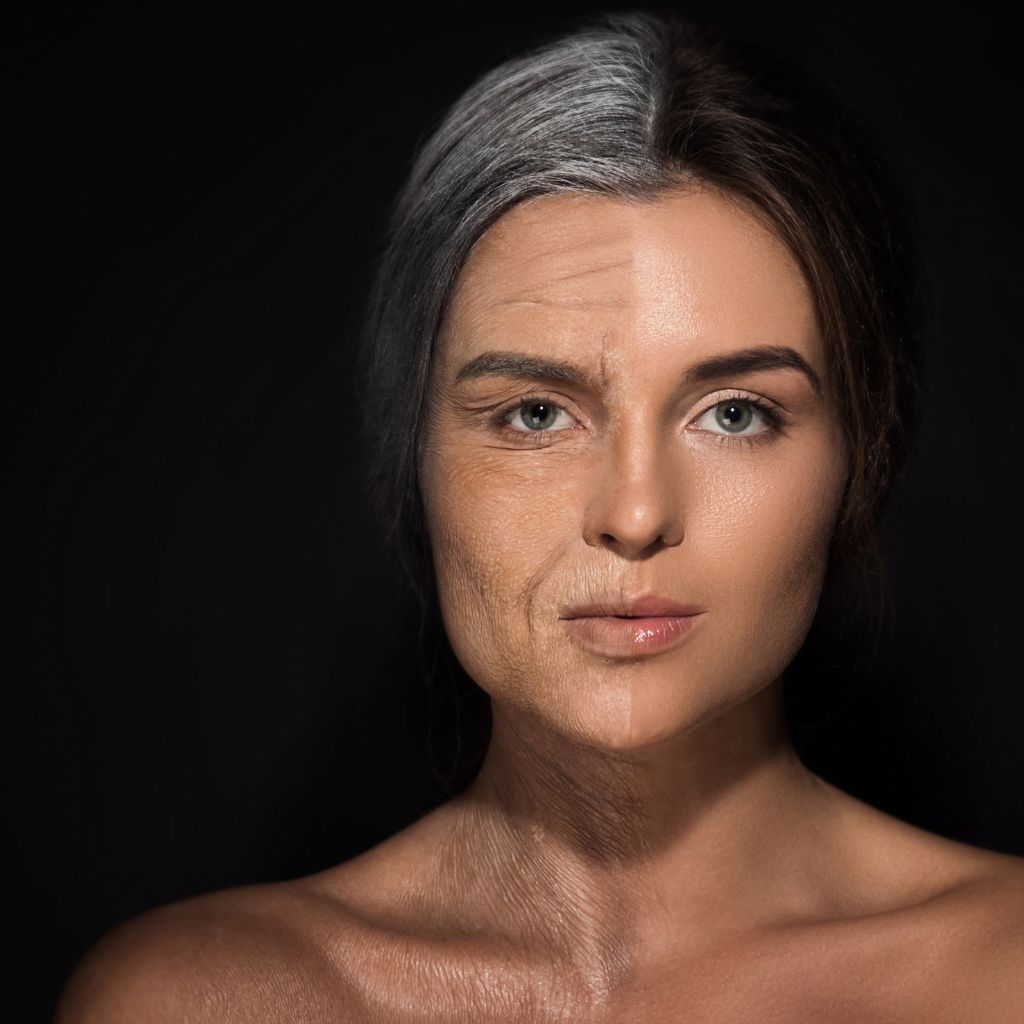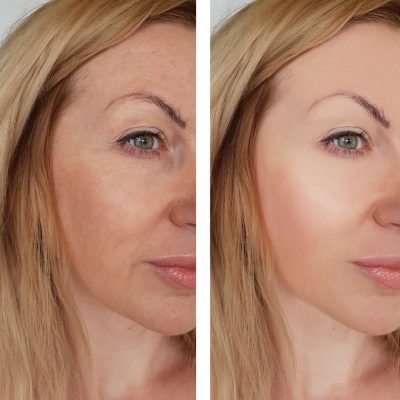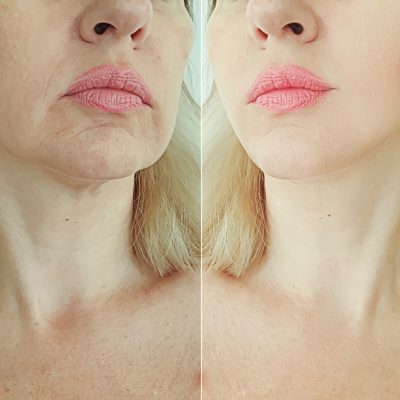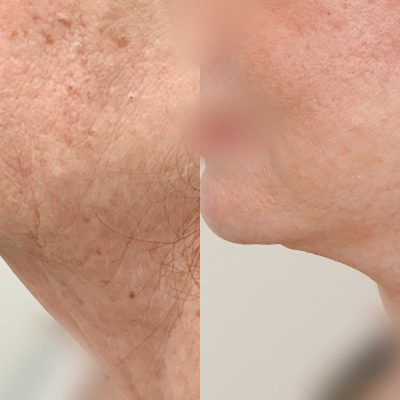Deep-Plane Facelift
- Home
- Deep-Plane Facelift
Deep-Plane Facelift:
When to consider a facelift?
A facelift is a surgical procedure that can address various signs of aging in the face and neck.
While each individual’s needs and goals may differ, there are some common factors to consider when thinking about a facelift:
Visible signs of aging
If you have noticeable signs of aging in your face and neck, such as deep creases, sagging skin, or jowls, a facelift may be an appropriate option. It can help to restore a more youthful and rejuvenated appearance by tightening the underlying tissues and removing excess skin.
Loss of facial volume
As we age, our face tends to lose volume, resulting in a sunken or hollow appearance. If you have experienced a loss of facial volume that contributes to an aged or tired look, a facelift can be combined with fat grafting or dermal fillers to restore volume and create a more youthful contour.
Skin laxity
If you have significant skin laxity, where the skin has lost its elasticity and sags excessively, a facelift can help to tighten and reposition the skin, giving your face a firmer and smoother appearance.
Deep wrinkles and folds
If you have deep wrinkles and folds in the lower face and neck that are not adequately addressed by non-surgical treatments, a facelift can provide more comprehensive and long-lasting results. It can smooth out deep lines and creases, providing a more refreshed and youthful look.

Ultimately, the decision to undergo a facelift is a personal one. During your consultation with Dr. Brandt he assess your unique situation, discuss your options, and guide you towards the most suitable treatment plan to achieve your desired results.
What is a deep-plane facelift?
A deep-plane facelift is a surgical procedure used to address signs of aging in the face and neck. It is a more advanced technique that involves repositioning and tightening the deeper layers of the face for long-lasting results.
By targeting the underlying structures, the procedure can improve facial contours and address multiple signs of aging simultaneously. Unlike traditional facelifts that focus on the upper layers, the deep-plane technique targets the deeper muscle and fat layers of the face.
By lifting and repositioning these deeper tissues, Dr. Brandt can create a more natural and youthful appearance. This approach also helps to address jowls, sagging cheeks, and deep nasolabial folds (lines from the nose to the corners of the mouth).
One of the key benefits of a deep-plane facelift is that it can provide more significant and longer-lasting results compared to other facelift techniques.
Who is a good candidate for a deep-plane facelift?
You’ve likely already done this simple self-assessment. To see if you are a good candidate for a facelift, follow these steps in a mirror:
- Place your hands along the middle part of your jaw, with your index fingers pointing upward and your thumbs positioned under the jaw.
- Gently pull upward, applying vertical pressure against gravity.
- Observe the results and consider if you are satisfied with the outcome.

If you feel like the lifted appearance turns back the clock and restores your appearance, then you may be a good candidate for a facelift. However, it is essential to note that this self-assessment is not a definitive diagnostic tool. To receive a professional evaluation and personalized recommendations, we encourage you to schedule a consultation with Dr. Brandt. He will thoroughly assess your unique facial features, discuss your concerns and goals, and provide expert guidance on whether a facelift or alternative treatments would be best for you.
What are other facelift options?
In addition to a deep-plane facelift, there are other facelift options available to address signs of aging in the face and neck. These alternatives include:
Standard Facelift/SMAS Lift:
A standard facelift, is an excellent surgical procedure that targets the mid-to-lower face and neck. It typically involves tightening some of the deeper tissue of the face but does not go so far as repositioning the deeper tissues. This is an excellent option for someone who does not need the repositioning provided by a deep-plane facelift.
Neck Lift:
A neck lift is specifically designed to address sagging and excess skin in the neck area and is almost always a part of a standard or deep-plane facelift. On its own, this procedure can be used to restore neck contours and is frequently combined with neck liposuction to sculpt and create more jawline and neck definition.
Ultherapy:
Ultherapy is an Ultrasound based minimally invasive procedure that tightens the deep layers of the face and neck called the SMAS and the platysma muscle. This procedure is ideally suited for early jowls and individuals who want to “stay ahead” of the aging process. There is minimal downtime and recovery after Ultherapy treatment.
Morpheus8 / Radiofrequency treatments:
Radiofrequency treatments use needle stamps or an insertable probe to head up the skin. During the treatment, a device delivers controlled heat energy to the deeper layers of the skin. This heat stimulates collagen production, which helps tighten the skin, reduce wrinkles, and improve skin texture. This procedure does not address the deeper tissues of the SMAS and platysma, and it achieves the best results in individuals with mildly loose skin.
Mini Facelift:
A mini facelift, also called a limited-incision facelift, this is a less invasive option that focuses on improving the lower face and neck. A mini facelift tends to lift and reposition tissue without the need for removing excess skin. As a result, this procedure involves shorter incisions and only addresses mild to moderate signs of aging, providing a more subtle rejuvenation.
Liquid facelift:
A liquid facelift is a non-surgical cosmetic procedure that uses injectable dermal fillers and neuromodulators to rejuvenate the face. Dermal fillers restore lost volume and enhance contours, while neuromodulators relax facial muscles to reduce wrinkles. The treatment is performed in-office without incisions or anesthesia. Benefits include restored volume, wrinkle reduction, and improved facial contours. Results are immediate but temporary, lasting several months to a year.
What does a deep-plane facelift address?
A deep-plane facelift addresses concerns like sagging skin, deep creases, and jowls. During the surgery, Dr. Brandt lifts and tightens the deeper layers of the face, including muscles and fat, to create a more youthful appearance. By repositioning these underlying structures, the procedure helps improve facial contours and reduce the signs of aging. A deep-plane facelift provides long-lasting results, helping individuals achieve a more refreshed and rejuvenated look.
What does a deep-plane facelift not address?
While a deep-plane facelift can address various signs of aging in the face and neck, it’s important to understand that it has limitations. Here are some aspects that a deep-plane facelift does not specifically address:
- Skin quality: While a deep-plane facelift can improve facial contours and tighten underlying tissues, it does not directly address skin texture, discoloration, or sun damage. Additional treatments like laser resurfacing or chemical peels may be recommended to address these concerns.
- Eyelid or brow sagging: A deep-plane facelift primarily focuses on the lower face and neck. It does not target sagging eyelids or drooping eyebrows, which may require separate procedures like eyelid surgery (blepharoplasty) or a brow lift.
- Fine lines and superficial wrinkles: While a deep-plane facelift can smooth out deep wrinkles and folds, it may not have a significant impact on fine lines or superficial wrinkles. Non-surgical treatments like injectables or skin resurfacing techniques may be more appropriate for addressing these concerns.


What to expect during recovery from a deep-plane facelift?
While patients recover quickly, a deep-plane facelift is a big operation. Although they will be swollen and need further healing time, most patients feel well only a few days after surgery. Patients typically return to work and their normal social activities after 3-4 weeks. During the recovery period following a deep-plane facelift, it is important to understand what to expect. Here are some key points to keep in mind:
- Swelling and bruising: Swelling and bruising are expected after a deep-plane facelift. They usually peak within the first few days and gradually subside over a few weeks. Applying ice-packs, cold compresses, and keeping your head elevated can help reduce swelling.
- Bandages and dressings: You may have bandages and dressings on your face after the surgery. These are meant to protect the incisions and provide support to the healing tissues. The most extensive bandages are removed 24 hours after surgery with further dressings directed by Dr. Brandt.
- Drains: Dr. Brandt sometimes uses small tubes to remove excess fluid or blood from the surgical site. Drains help to reduce excess swelling and speed up recovery. These are typically removed 3+ days after surgery when the tissues begin to heal and the drains are no-longer required.
- Discomfort and pain: Some discomfort and pain are expected during the early recovery phase following surgery. Dr. Brandt will prescribe pain medications and help gudie you to minimize any discomfort.
- Restricted activities: Following a deep-plane facelift, you will need to avoid exercise, strenuous activities, heavy lifting, and bending over for a few weeks. Dr. Brandt will guide you on when you can gradually resume normal activities.
- Healing and scars: The incisions made during the surgery will gradually heal over time. Initially, they may appear red and raised, but they will gradually fade and become less noticeable with proper care. Dr. Brandt will guide you on scar care techniques to minimize their visibility.
- Follow-up appointments: You will have follow-up appointments with Dr. Brandt to monitor your progress, remove sutures, and address any concerns or questions you may have during the recovery period. It is essential that you attend these appointments to ensure your healing remains on track.
FACELIFT BEFORE & AFTER
Take a look at some of the results from our previous patients





What are the risks of a deep-plane facelift?
A deep-plane facelift, like any surgery, has risks and potential complications. It’s important to understand these risks before deciding to have the procedure.
Infection:
There is a risk of infection with any surgery. While the risk of infection in facelift surgery is minimal, Dr. Brandt will prescribe prophylactic antibiotics to help prevent this.
Bleeding:
Some bleeding is normal and expected after a facelift. In very rare cases, it can be excessive and may require urgent additional treatment which can include re-opening of the surgical site.
Hair loss:
In some cases, temporary hair loss may occur around the incisions. This is usually temporary and the hair will grow back over a period of several months.
Scarring
Dr. Brandt designs his facelift incisions to minimize scarring by placing the incisions within natural creases and sometimes within the hairline. In some patients, scars are more visible than others and Dr. Brandt will work with you to help ensure the best possible outcome
Anesthesia complications:
Anesthesia carries its own risks, including rare allergic reactions and problems with breathing or the heart. This is why Dr. Brandt leaves your anesthesia care to a certified and experienced Anesthesiologists who will make sure to closely monitor you, and keep you safely comfortable during your operation.
Results:
It's important to have realistic expectations. While a facelift can significantly improve your appearance, it will not help you get a new job nor improve your love life. It's important to discuss your expectations with Dr. Brandt so that he can work with you to discuss realistic and achievable goals.
Nerve damage:
Immediately following facelift surgery it is normal and expected to experience temporary numbness of the face and neck. This numbness gradually improves over several months. There is a very small risk of permanent numbness of the earlobes and/or face following facelift surgery. Immediately following deep-plane facelift surgery, the surgical stretching of muscles and nerves can cause weakness in facial movement – this can occur on one side or both. This gradually improves after surgery but in very rare instances, it is possible to have permanent impairment of some facial movement.
Why choose Dr. Brandt for your deep-plane facelift?
Dr. Brandt is a Royal College certified Head & Neck Surgeon with advanced training and expertise in facial cosmetic surgery. He is a Diplomate of the American Board of Facial Plastic & Reconstructive Surgery and a Fellow of the Canadian, American, and European Academies of Facial Plastic & Reconstructive Surgery. Dr. Brandt trained at one of the most demanding Head & Neck Surgery programs in the Country – Western University in London, Ontario, Canada; and then went on to elite Fellowship training in Facial Plastic Surgery at the University of Michigan.
Dr. Brandt routinely spends time visiting and learning from the top international deep-plane facelift surgeons world-wide and is continuously refining his techniques to ensure you are receiving the best deep-plane facelift procedure.
In addition to his cosmetic work, Dr. Brandt is a sought-after expert in reconstructive facial plastic surgery where he uses his talents to restore patient’s faces after skin cancer removal surgery and improve facial scarring.
What is the cost of a deep-plane facelift in Toronto?
Many factors contribute to the all-inclusive cost of a deep-pane facelift in Toronto with Dr. Brandt. These include:
- Your particular procedure: Dr. Brandt will assess your unique goals and the procedures required to achieve them. Some patients may require more extensive surgery due to complexity, their individual anatomy, or desired goals. Furthermore, some patients may request additional treatments, such as eyelid improvements, in conjunction with their deep-plane facelift surgery. While extra procedures can increase the overall cost, there are potential benefits, including discounted individual procedures and a single recovery period.
- Anesthesia fees: Dr. Brandt feels strongly about your safety. To that end, he only works with certified Anesthesiologists to provide your anesthesia care. If you’re having an anesthetic for your procedure with Dr. Brandt, rest assured it is being administered by a well-qualified anesthesia expert.
- Nursing fees: Great surgery requires an excellent team and Dr. Brandt works with skilled and certified nurses to ensure you get the best possible care. Each surgical procedure requires a nurse to assist Dr. Brandt with the surgery, a circulating nurse to help ensure the operating room is in order, and a recovery room nurse to care for you immediately after your procedure. Each one of these individuals is critical to ensuring your safety.
- Operating room facility fees: Dr. Brandt exclusively operates in operating rooms certified by the College of Physicians and Surgeons of Ontario (CPSO). These operating rooms are rigorously evaluated and routinely re-evaluated to ensure they meet stringent sterility and safety guidelines.
- Equipment and surgical fees: Dr. Brandt uses only the best possible equipment, sutures, and technology. Dr. Brandt is not willing to compromise to achieve the best outcomes for his patients.
- Follow-up fees: The all-inclusive cost of deep-pane facelift surgery with Dr. Brandt not only covers the cost of your procedure but also includes all of your follow-up appointments... forever. Should you have a question or concern about your procedure throughout your recovery or even 10-years later, Dr. Brandt will happily see you at no additional expense.

Please keep in mind that the cost of a facelift can vary depending on individual circumstances. Dr. Brandt and his team will provide you with a personalized cost estimate based on your specific needs and desired outcomes.
For reference, the starting price of a deep-plane facelift surgery with Dr. Brandt is approximately $20,000 + applicable taxes.
